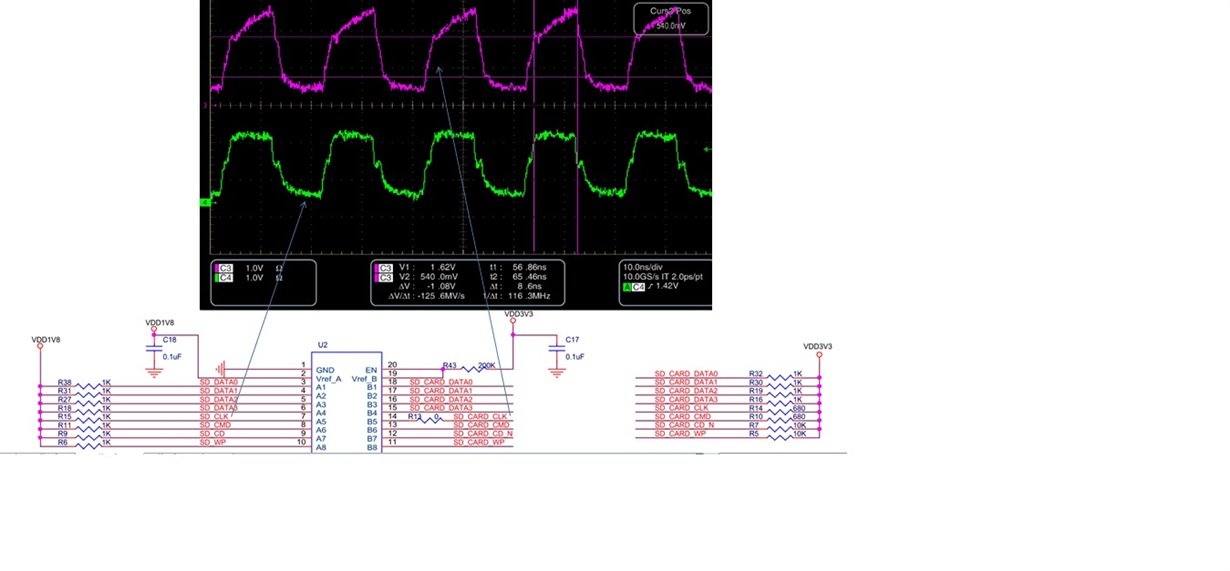Our customer choose LSF0108 for SD card application, because the datasheet has SDIO application.
But when testing, they found the waveform of 3.3V SD_CLK is not good enough. Like picture.
Although it doesn't affect the function, they are afraid that it may cause problem after MP.
Does any reason cause the problem?
The length of their design is as below:
VCCA VCCB
CPU --------------> Level shift --------------> SD CARD connector
8.4" 0.8"
They consider to use TXS0206 for option design, but there is no layout guide. Does TI have TXS0206YFPR layout guide?
Please help to advice, thanks.


